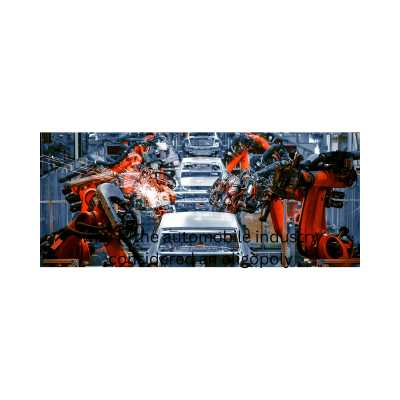Within the domain of financial matters, the term “oligopoly” why is the automobile considered an oligopoly alludes to a showcase structure ruled by a small number of huge firms. When we dive into the vehicle industry, it becomes clear that it flawlessly typifies the characteristics of an oligopolistic showcase. This article points to explain why the car industry is considered an oligopoly, investigating its different features and suggestions.
Characteristics of an Oligopoly
Oligopolies are characterized by many prevailing firms, tall obstructions to passage, interdependence among competitors, and non-price competition. These highlights are conspicuously shown within the car industry.
Outline of the Car Industry
The vehicle industry includes the generation and dealing of vehicles, including cars, trucks, and bikes. It is one of the biggest businesses all-inclusive, with critical financial and social suggestions.
Showcase Structure of the Vehicle Industry
The vehicle industry is overwhelmingly oligopolistic, with a modest bunch of key players ruling the showcase. These companies apply significant impact overestimating, generation, and development.
Major Players within the Automobile Industry or Why is the Automobile Considered an Oligopoly
Driving multinational enterprises such as Toyota, Volkswagen, Common Engines, Passage, and Honda command considerable advertising share within the automobile industry. Their dominance contributes to the oligopolistic nature of the advertising.
Interdependency Among Vehicle Companies
In an oligopoly, firms closely screen and respond to each other’s activities. The choices of one company with respect to estimating, promoting, or item advancement can altogether affect its competitors. This interdependency cultivates vital intuition among vehicle companies.
Estimating Techniques within the Vehicle Industry
Oligopolistic firms often engage in vital estimating to keep up showcase share and maximize benefits. Cost competition is tempered by the understanding that aggressive cost cuts may trigger a retaliatory reaction from competitors.
Item Separation
To recognize themselves in a competitive showcase, vehicle producers center on item separation. This includes making interesting highlights, branding, and promoting methodologies to offer to customers.
Obstructions to Section
The vehicle industry presents impressive boundaries to the passage, counting tall capital prerequisites, economies of scale, and built-up brand devotion. Unused participants confront critical challenges in competing with built-up players. Why is the Automobile Considered an Oligopoly

Government Regulations and Oligopoly
Government controls play a pivotal part in forming the competitive scene of the vehicle industry. Natural standards, safety controls, and exchange policies influence showcase elements and competition among firms.
The Affect of Innovation on the Vehicle Industry
Mechanical headways, such as electric vehicles, independent driving innovation, and network highlights, are reshaping the vehicle industry. These advancements have the potential to disturb existing advertising flow and modify the competitive scene.
Globalization and Oligopoly
The car industry is increasingly globalized, with companies working in different nations and locales. Globalization amplifies competition among oligopolistic firms and presents unused challenges and openings.
Reactions of Oligopoly in the Automobile Industry
Faultfinders contend that oligopolies can lead to diminished shopper choice, higher costs, and smothered advancement. Concerns approximately machination, anti-competitive behavior, and showcase control too flourish within the car industry. Why is the Automobile Considered an Oligopoly
Future Viewpoint
Looking ahead, the car industry faces various challenges, counting administrative weights, innovative disturbance, and moving customer inclinations. Versatility and advancement will be key to exploring the advancing scene of the car advertisement.
Conclusion
In conclusion, the automobile industry represents the characteristics of an oligopoly, with a small number of prevailing firms applying noteworthy impact over showcase dynamics. Why is the Automobile Considered an Oligopoly Understanding the oligopolistic nature of the industry is basic for policymakers, businesses, and shoppers alike.
FAQs
Is the car industry a restraining infrastructure or an oligopoly?
The vehicle industry is considered an oligopoly due to the nearness of a couple of expansive firms ruling the showcase.
How do oligopolies affect shopper choice?
Oligopolies may restrain customer choice by reducing the number of competing firms and advertising comparative items or administrations.
How do government directions impact oligopolistic markets?
Government directions can affect oligopolistic markets by forcing limitations on estimating, product safety, and natural measures.
What are the prospects for new participants within the vehicle industry?
Modern participants confront critical boundaries to passage within the vehicle industry, counting tall capital prerequisites and strong competition from built-up players.

